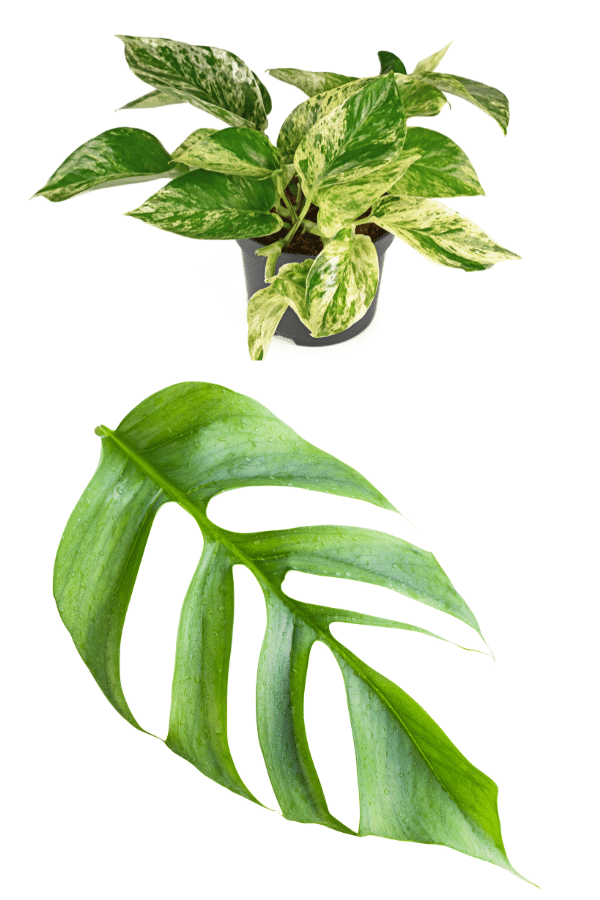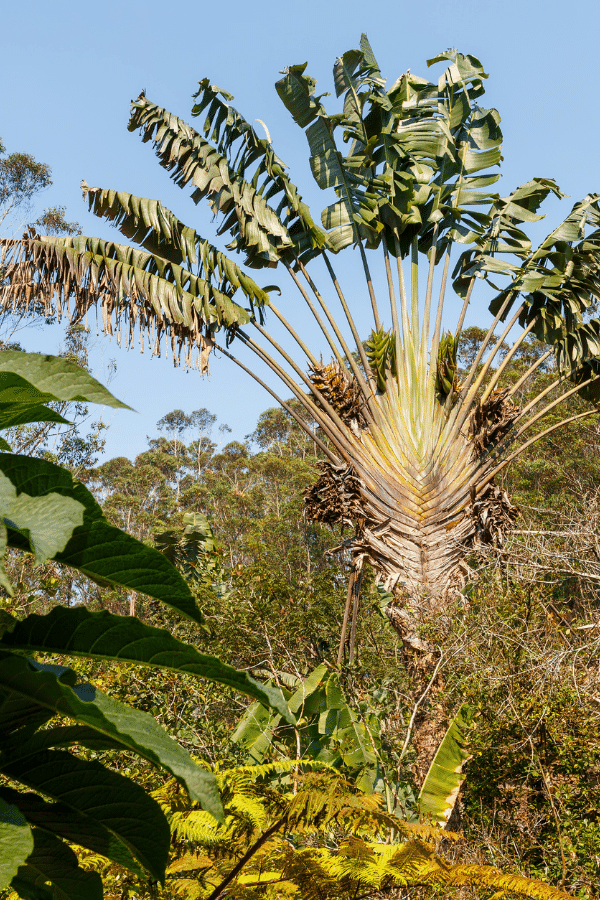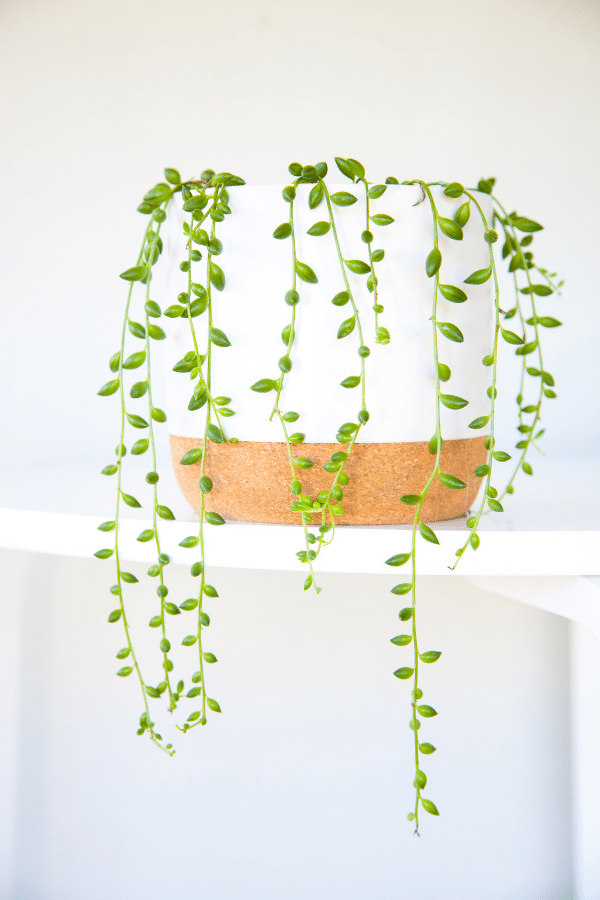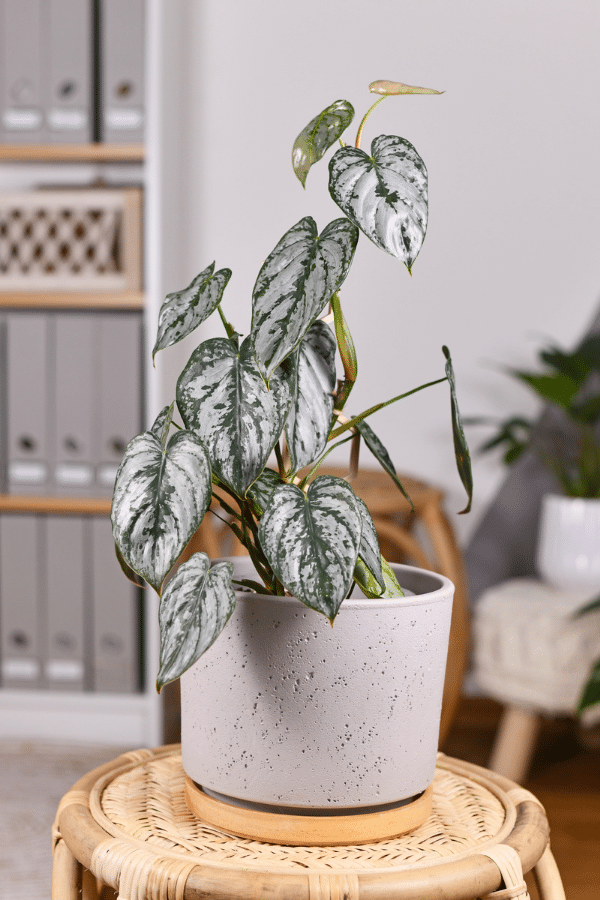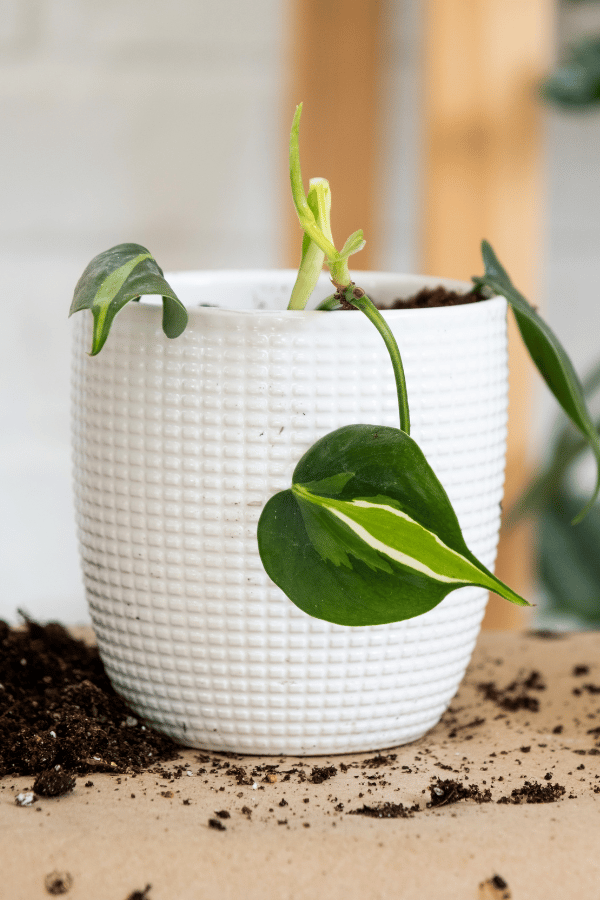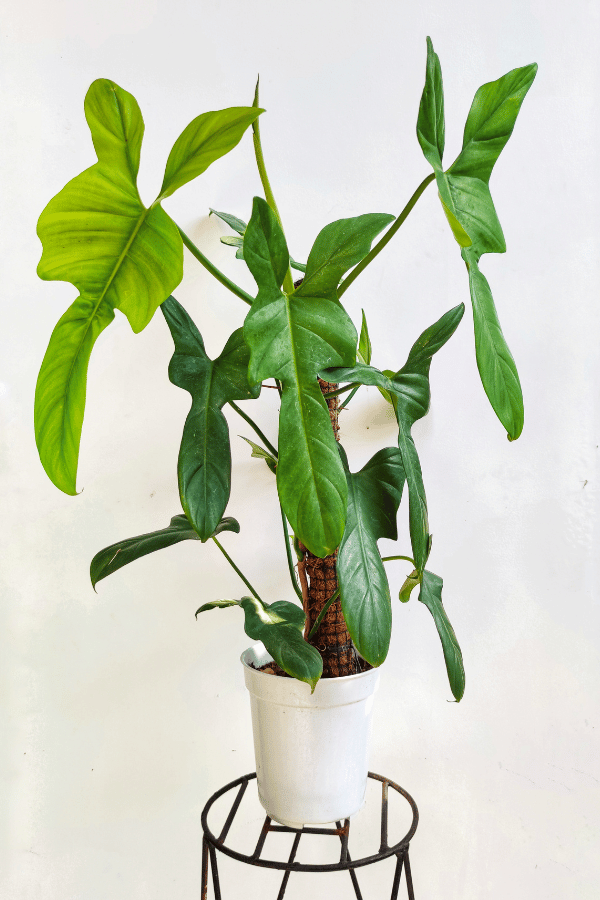Philodendron Light Requirements
Lighting requirements for philodendrons is very important to understand as it’s the first thing to understand to make the plant flourish. Philodendrons come in a variety of species, each with their own specific light requirements.
Generally, they prefer bright, indirect light to maintain their lush green foliage. Too little light can result in smaller leaves and elongated stems, while too much direct sunlight can damage the leaves, leading to discoloration or sunburn. Finding the right balance of light for each of your Philodendrons is so important for the plant to thrive.
To achieve the best lighting conditions, take note of your home’s natural light sources and consider the specific needs of your philodendron species. By adjusting your plant’s placement and observing its growth, you can provide the optimal conditions for your Philodendron to display its gorgeous leaves and robust stems, enhancing the overall aesthetic of your space.
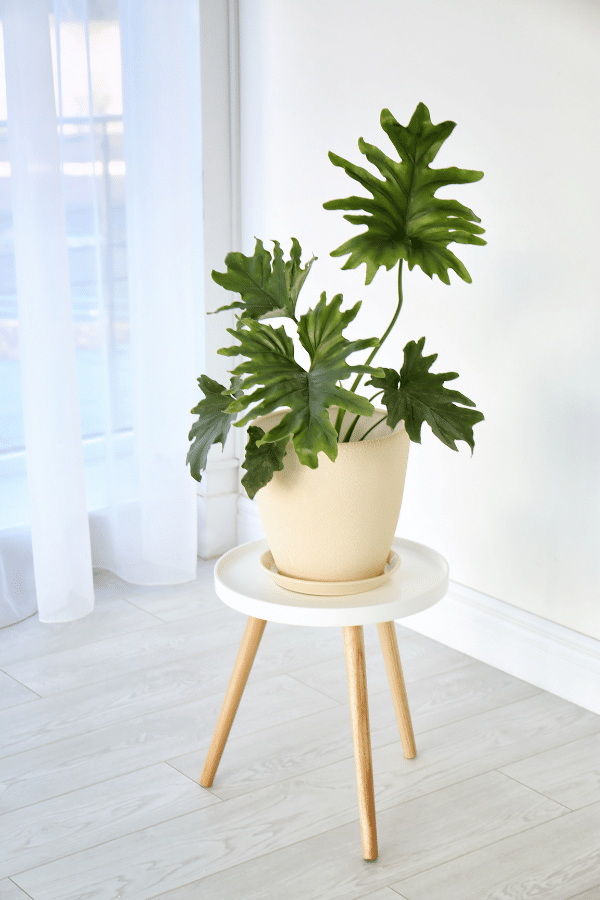
How Much Light Does a Philodendron Need?
Philodendrons are versatile houseplants that can thrive in a variety of light conditions. However, they prefer medium to bright light levels, depending on if they are a climbing or crawling variety.
Crawling varieties can receive less light than its climbing counterparts due to the way they naturally grow in the forest. Crawling Philodendrons crawl on the floor, while climbing Philodendrons reach for the light and grow under the rainforest canopies of trees, meaning they need more light to thrive.
Your Philodendron may still grow in low light conditions but at a slower pace. The plant may become leggy, with longer spaces between leaves, indicating a need for more light. However, it’s essential to avoid placing them in direct sunlight as this can cause their leaves to burn or turn yellow from too much exposure.
Bright indirect light is ideal for promoting optimal growth and maintaining vibrant foliage. Remember that a window acts as a barrier from the sun, so Philodendrons can tolerate east, west, or south-facing windows. Just be sure to always check over your plant and make sure it is in good health and adjust the lighting conditions accordingly.
What Type of Light Does Philodendron Need?
Philodendrons thrive in various light conditions, but bright indirect sunlight is ideal for their growth. Placing your Philodendron near a window with filtered sunlight will provide the perfect amount of light. Be careful with direct sunlight, as it can scorch their leaves and hinder growth.
You can expect slower growth in medium light environments, but the plant can still grow well. If you live in an area with limited natural light or want to place your Philodendron in a room without windows, consider using artificial grow lights. A standard grow light will suffice in mimicking sunlight to maintain the plant’s health.
However, if your space offers only low light conditions, you need to watch your Philodendron closely. The plant may survive, but growth will be significantly slower and the leaves may lose their vibrancy. In such situations, introducing a bright light source like a grow light would be highly beneficial.
Exposure plays a key role in the well-being of your Philodendron. Ensure that the plant receives equal light on all sides by rotating it regularly. This will promote even growth and prevent any side from being deprived of light.
Artificial Grow Lights vs Natural Sunlight
When providing your Philodendron with the right amount of light, you have two options: artificial grow lights and natural sunlight. Each option has its own advantages and disadvantages, and the best choice depends on your specific situation and how much natural light you have available in your space.
First and foremost, natural sunlight will always be the best option for houseplants as it provides a full spectrum of wavelengths of light for photosynthesis. But there’s nothing you can do if your space doesn’t have much natural sunlight, so grow lights are the next best thing to natural lighting.
Artificial grow lights are an excellent option if your space lacks sufficient exposure to natural light. With grow lights, you can closely control the intensity and duration of the light exposure, ensuring your Philodendron receives the right amount of bright light it needs to thrive. There are different types of grow lights available, such as LED, fluorescent, and incandescent. Full-spectrum LED grow lights are the best grow lights for houseplants.
Can Philodendrons Live In Low Light?
Philodendrons can adapt well to a variety of lighting conditions as they are generally resilient and tolerant. However, the amount of light it receives will impact your Philodendron’s growth rate and health.
In low light conditions, your Philodendron may grow more slowly and the leaves on the vines may be smaller or closer together. Keep in mind that low light doesn’t mean no light. This plant with gorgeous heart-shaped leaves still needs natural or artificial light to carry out its essential biological processes.
If your living space lacks natural light, consider using a grow light to supplement your Philodendron’s light requirements. Artificial grow lights can provide adequate illumination, promoting a healthy growth pattern.
Ensure that the light is not too intense or too far away from the plant, as both scenarios can inhibit growth and health. Grow lights usually work best when put somewhere between 6-12″ between the light and the plant. But of course, monitor your plant when using a grow light and move it farther away if it’s foliage is burning or closer if the plant isn’t growing.

Signs Your Philodendron Needs More Light
As a plant parent, it’s essential to understand Philodendron light requirements and recognize the signs when your plant needs more light. Philodendrons typically thrive in bright indirect sunlight, but sometimes they require more light exposure to maintain their health.
One sign that your Philodendron craves more light is the appearance of yellow leaves. Yellowing might also be caused by overwatering or lack of nutrients; however, when accompanied by leggy growth and small, pale leaves, your plant needs more light. To ensure proper growth, gradually increase your Philodendron’s exposure to bright light.
Another critical factor to consider is your plant’s location. If you’ve placed your Philodendron in a dimly lit room or far from a window, this could significantly impact its growth.
I really love the rule of turning off all the lights in the space you want to keep your Philodendron and asking yourself, “would I want to live in here?” I think it’s a good way to put yourself in your plants shoes and see if they would like living there. If the answer is no, your plant doesn’t want to live in there either. Relocate it to a brighter spot where it has access to bright indirect sunlight.
Signs Your Philodendron Needs Less Light
If you notice that your Philodendron is developing brown leaves, it could indicate that the plant is receiving too much light. Exposure to direct sunlight or extended periods of bright light can cause damage to the delicate foliage. To avoid this, ensure that your Philodendron is placed in a location where it can receive bright indirect sunlight.
Another-sign that your Philodendron could benefit from less light is if you see curling or wilting of leaves. This typically occurs when the plant experiences an excess amount of sunlight, causing its leaves to lose their vibrant green color and crisp texture. Moving your Philodendron to a spot with less light, whatever that means inside your home, can often alleviate this issue.
In addition, if your Philodendron’s growth seems stunted or slows down noticeably, this could also be a sign that it is receiving too much light. Bright indirect light is ideal for promoting healthy growth in Philodendrons. Be mindful of your plant’s exposure to light throughout the day and make adjustments as needed.
To ensure your Philodendron thrives, monitor its light requirements and adjust accordingly. Providing optimal lighting conditions will help maintain the plant’s overall health and help it continue to grow lush and green.
Best Spots for Philodendrons Inside Homes
Philodendron plants are adaptable houseplants. However, choosing the ideal spot for your Philodendron can significantly impact its appearance and growth. Here are some prime locations to consider when finding a home for your Philodendron.
East-facing windows are a good option for your Philodendron. The morning sunlight is gentle, ensuring that your plant will receive sufficient light without the risk of burning. Placing the pot near an east-facing window allows it to soak up just enough warmth and brightness to keep it healthy and happy.
South-facing windows are another excellent option, especially if your home doesn’t have access to east-facing windows. Philodendrons do well in the bright, indirect light provided by south-facing windows. Since these windows can receive intense sunlight during the day, be sure to protect your plant with some sort of minor obstruction, whether it be a few feet away from the window or a sheer curtain.
If you don’t have access to east or south-facing windows, don’t worry. Philodendrons are versatile houseplants that can still adapt to less-than-ideal conditions. Place your plant in an area where it can receive filtered light from a nearby window or consider investing in grow lights for your houseplants.
Another thing to think about when positioning your Philodendron inside your home, avoid placing it directly against cold windows or hot radiators. Extreme temperatures can harm the plant, so it’s essential to maintain a comfortable and consistent environment. Remember to rotate your Philodendron every few weeks to promote even growth on all sides from the sun.
Of course, Philodendron lighting is one of the main things to understand when it comes to taking care of them. These other Philodendron resources also are very important to grow a thriving and big plant.

